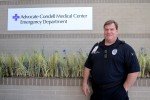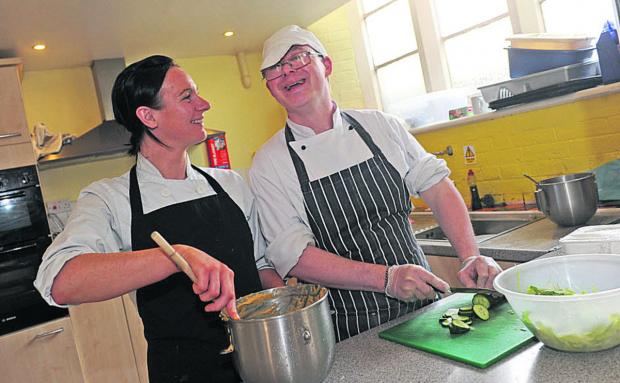NASHVILLE — Country music star Randy Travis was awake and interacting with his family and friends Monday as he recovers from surgery following a stroke, his doctors said.
In a news release and video from the Texas hospital where the 54-year-old singer is recovering, doctors said Travis remains in critical condition and on a ventilator, but is off a heart pump and is breathing spontaneously. His breathing support is gradually being reduced and he has begun the early stages of physical therapy.
Mary Davis, Travis’ fiancée, thanked the singer’s friends and fans for their prayers and support.
“I know that Randy feels each and every one of those,” Davis said in the video. “He feels the hands of the doctors and the care of the nurses and the love of his fans. His friends and family have all been touched by that. He is responding well to voices and he sees and he understands. He’s miles beyond where any of us thought he would be a few days ago.”
Travis will stay at The Heart Hospital Baylor Plano for two to three more weeks before being transferred somewhere else to undergo aggressive physical therapy. Doctors say it will take months to recover from the stroke, but scans shows the swelling in his brain is subsiding following surgery and he is making good progress in his recovery.
The Grammy Award-winning “Three Wooden Crosses” singer checked into the hospital on July 7 after a viral illness affected his heart.
Doctors said Travis has a seriously weakened heart — a condition called cardiomyopathy — that the viral infection apparently made worse. However, he doesn’t have an active heart infection, and doctors said long-term, he should be able to manage his weakened heart with medication.
Dr. Michael Mack, a cardiac surgeon and medical director of cardiovascular disease at Baylor Health Care System in Dallas, said Travis’ heart no longer needs a small pump to help control blood flow.
Mack said echocardiograms indicated the heart problem was not caused by drug and alcohol abuse.
“Mr. Travis does have a family history of cardiomyopathy and it is more likely related to that,” Mack said.
Travis has had troubles with alcohol recently and pleaded guilty to driving while intoxicated in January following an accident last August. He received two years of probation and a $2,000 fine. He was required to spend at least 30 days at an alcohol treatment facility and complete 100 hours of community service.
Before falling ill with a viral upper respiratory illness, he’d recently made several public appearances, including a spot on the Country Music Association Festival’s nightly concert lineup and a poignant performance at George Jones’ funeral.
Travis was admitted to Baylor Medical Center McKinney near his home in Tioga, about 60 miles north of Dallas, and was transferred to The Heart Hospital Baylor Plano after doctors stabilized his heart with the pump. As doctors removed the pump, he had the stroke, Mack said.
The North Carolina-born Travis is a traditional country purist known for hits “Forever and Ever, Amen” and “I Told You So.” His 1986 Warner Bros. debut album “Storms of Life” sold 3 million copies, and helped return country music to the sound of Hank Williams and George Jones. It also made Travis and his mellow baritone a star, leading the way for other artists from Alan Jackson to “American Idol” winner Scotty McCreery.



